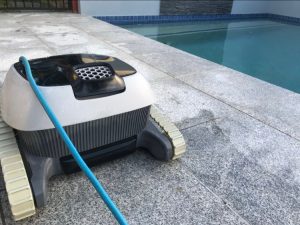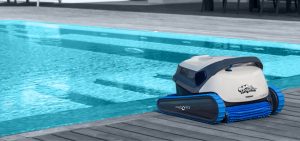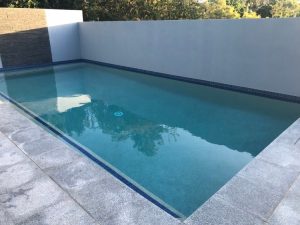Have you ever had a green pool?
Chances are, at some point, some part of your pool has turned green, or you have heard of someone else who has. This is a relatively common issue, especially during the spring and summer months.
Pools tend to turn green because they are more susceptible to algae growth than they are to other types of bacteria. If you have never experienced a pool that has turned green, you might be surprised at how quickly it can happen.
The most common cause of green pools is high levels of organic material in the water. If you have recently had a party, or if the weather has been a bit more humid than normal, then you are more likely to find that your pool has turned green. Because the weather has been so nice lately, many people have been doing a lot of cleaning and preparing for the summer, which means that there is a lot of organic material in the water.
What causes a pool to go green
Having a green pool can be quite an annoyance. A green pool can be caused by a number of reasons, including algae, moss and high alkalinity, but the most common reason is too many chemicals in the water. There are a few different ways to get rid of a green pool, but before you start, it’s important to know what kind of green you have.
Types of green pools
Green algae is a form of plant growth that appears in the water and is unsightly. The green color may vary from light to dark shades and is often mistaken for a different type of algae. On the other hand, it can be hard to identify certain types of algae because of how similar they look to each other. For example, you can have green algae and blue-green algae that look very similar and it can be difficult to find a way to tell the two apart. In order to identify what type of algae you have in your pool, you should look at the color, shape, location and growth curve.
Green Algae
Green pool algae is generally a result of high levels of phosphates in the water. Phosphates are a common ingredient in many pool products, but can also come from other sources such as fertilizer runoff from nearby lawns and overuse of certain cleaning products. Algae blooms usually occur when there are high amounts of sunlight and warm temperatures. Most algae blooms are not harmful to humans, but can cause damage to the pool liner and water’s clarity. They can be removed by manually taking it out of the pool or by using a pool clarifier.
Step 1: Check the Chlorine/Bromine level.
If chlorine is too high in the pool water, it will cause the pool water to turn green. If your pool water is turning green, it is a sign that the pool is unhealthy and you should check the chlorine level. Chlorine is a chemical that is added to the pool water. Chlorine is used to kill microorganisms in the water. You can tell if the chlorine is too high in the pool water when the swimming pool turns green. You should check the chlorine level in the pool water if the swimming pool water is turning green.

Step 2: Clean or change your filter.
The best way to keep your pool clean is to have a clean filter. The best way to keep your filter clean is to check it regularly. If your pool is looking a little murky, chances are it’s due to a dirty filter. Check your filter, and you can avoid those embarrassing moments when your guests ask how often you clean your pool. If you have a cartridge style filter, be sure to hose it out regularly. If the pool is very dirty, vacuum the pool but have the water pumping to waste instead of back through the filter. This will pump the water out of the pool and not cause the algae and waste to recirculate back into the pool.

Step 3: Balance your water.
Balanced water is a necessity for a clean pool. There are many factors that affect the water balance of a pool. Some of those factors include the amount of debris in the water, the amount of chlorine, and the amount of pH in the water. To maintain the right level of pH in the water, you need to test the water on a regular basis. The pH should be between 7.2-7.8. Anything outside of this range can be harmful to the pool.
Step 4: Check your equipment.
Pool filters, pool cleaners and pumps need regular maintenance to prevent them from getting clogged and to ensure that your pool is clean and safe for swimming. The frequency of maintenance will depend on the amount of use your pool gets, but the rule of thumb is to clean or replace the filter or pump once a year.
The easiest way to tell if the filter needs cleaning is to look for the pressure gauge on the filter — it will start to rise when the filter is clogged. You can also try disconnecting the hoses from the pump and see if the pool loses pressure. A clean filter will have a reading of 5-10 psi, depending on the size of your pool. If you are not sure how to do this, you should contact your local pool service technician.
Step 5: Check your pool surface.
If you have a pool, you need to keep your pool surface clear of leaves and other particles, as well as free of algae. The problem is that you will probably not notice when the surface gets dirty, and that means that you will end up with greenish water, and the water might even start to smell bad. If you want your pool to be clean, you will have to keep an eye on the water surface, and that means that you need to clean it regularly. You can’t just let it get dirty and then clean it.
There are various ways to keep the surface of your pool clean without having to do it manually. One of these ways is to use a pool cleaner. A pool cleaner will scrub the surface and clean the pool, but there are other things that you can do too.
Step 6: Check your skimmers.
If you notice a buildup of debris in the skimmer then it’s time to clean it out. If you are doing a partial water change, then you should also do a partial skimmer basket clean out. If you have a leaf canister, clean it out as well. If you have a skim mate, clean it out. If you don’t have a leaf canister or a skim mate, then clean your skimmer basket. It’s easy to forget the skimmers until you see the buildup. This is why it’s important to do regular checks and partial clean outs of your skimmer baskets. Leaving the skimmers dirty means that your pool is not being cleaned.
If you’re having a hard time keeping your pool green and clear, follow these steps and clean your way to a healthier pool! Otherwise, it’s best to contact your local pool shop for more advice and service.






